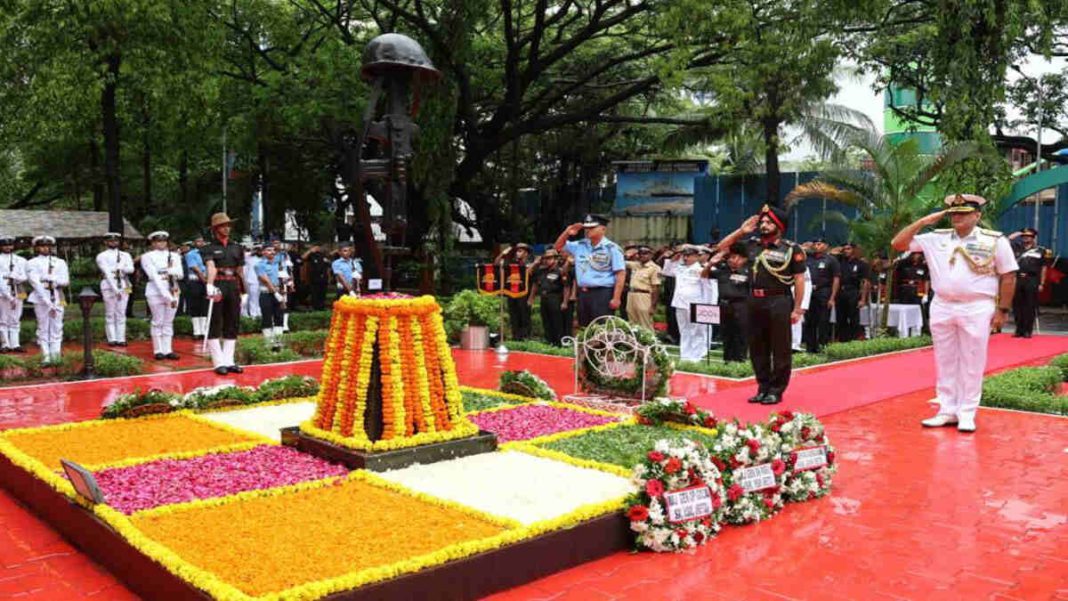INDIA. Mumbai: Commemorating Kargil War heroes. A solemn wreath-laying ceremony was held at Shaheed Smarak at Colaba in South Mumbai to commemorate the victory of the Indian Armed Forces and to pay tribute to the supreme sacrifice of martyrs on the occasion of “24th Kargil Vijay Diwas” on July 26, Wednesday.
The wreaths were laid by Lieutenant General HK Kahlon, General Officer Commanding Maharashtra Gujarat and Goa Area, followed by Vice Admiral Sanjay Bhalla, Chief of Staff, Western Naval Command, Rear Admiral AN Pramod, Flag Officer Commanding Maharashtra Naval Area and Air Vice Marshal Rajat Mohan, Air Officer Commanding, Headquarters Maritime Air Operations, veterans and other senior officers from all three services on occasion. The ceremony was attended by a number of serving personnel from all three services.
“Kargil Vijay Diwas” is commemorated on July 26 every year as a saga of gallantry and valour of a battle fought in the most inhospitable terrain in the world in the area of Kargil-Drass Sector of Ladakh.
On this day, the Indian Armed Force fought heroically on the steep slopes of ice peaks with grit and heroism, overcoming the enemy’s nefarious designs and driving the intruders out of Indian Soil, despite the most difficult terrain and terrible weather conditions. The “Kargil War Operation Vijay” was fought at a height of about 16,000 feet.
527 martyrs
In all, 527 martyrs laid down their lives in the war, which was fought for over 80 days (May 03-July 26, 1999) and ended with India taking back control of all the territories that were held by Pakistan.
Background
There had been armed conflicts in the 1980s. Involving the Indian and Pakistani military forces to control the Siachen Glacier by establishing military outposts on the surrounding mountain ridges after the Indo-Pakistani war of 1971.
The tension escalated due to separatist activities, some of which were supported by Pakistan during the 1990s. The atmosphere became belligerent after both countries conducted nuclear tests in 1998. India and Pakistan signed the Lahore declaration in February 1999 to provide a peaceful and bilateral solution to the Kashmir conflict.
However, during the winter of 1998–1999, some elements of the Pakistani Armed Forces covertly sent Pakistani troops to the Indian side of the Line Of Control. The goal was to cut the link between Kashmir and Ladakh, forcing Indian soldiers to withdraw from the Siachen Glacier and forcing India to discuss a resolution to the broader Kashmir dispute. This resulted in the Kargil War, in which India triumphed.
Also Read: Homage Paid To War Heroes on ‘Kargil Vijay Diwas’



